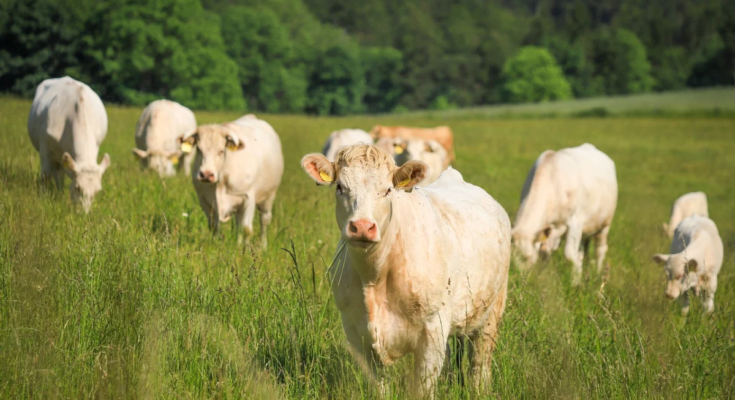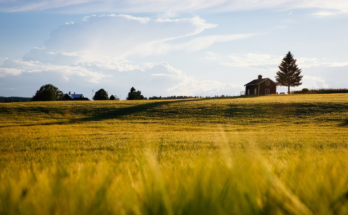Livestock farming is a critical component of agriculture, providing essential products such as meat, milk, and wool. However, livestock farming comes with its own set of risks, including disease outbreaks, accidents, theft, and natural disasters. Livestock insurance is designed to mitigate these risks and protect farmers’ investments. This article explores the various aspects of livestock insurance, its importance, types of coverage, costs, and claims processes, ensuring you have all the necessary information.
What is Livestock Insurance?
Livestock insurance is a specialized form of insurance that provides coverage for farmers against the loss or damage of livestock due to various unforeseen circumstances. This insurance protects against financial losses incurred from the death or injury of animals due to accidents, diseases, or other risks outlined in the policy.
Importance of Livestock Insurance
- Financial Protection: Livestock insurance provides essential financial protection for farmers. Livestock can represent a significant investment, and insurance helps safeguard against potential losses that could jeopardize the farm’s financial stability.
- Risk Management: By obtaining livestock insurance, farmers can manage the inherent risks associated with livestock farming. This includes coverage for unexpected events that could lead to the death or injury of animals.
- Peace of Mind: Knowing that they have insurance coverage allows farmers to focus on their operations without constantly worrying about potential losses. This peace of mind can lead to better management practices and overall productivity.
- Support for Agricultural Growth: Livestock insurance encourages farmers to invest in their operations and expand their businesses. With coverage in place, farmers are more likely to pursue growth opportunities, contributing to overall agricultural development.
Types of Livestock Insurance Coverage
Livestock insurance can be tailored to meet the specific needs of different farming operations. Here are the primary types of livestock insurance coverage available:
- Mortality Insurance: This coverage provides financial compensation in the event of the death of livestock due to accidents, diseases, or other specified causes. It is one of the most common forms of livestock insurance.
- Accident and Health Insurance: This insurance covers veterinary expenses and medical treatments for injured or sick animals. It helps farmers manage the costs associated with caring for their livestock and ensures animals receive the necessary care.
- Livestock Theft Insurance: This coverage protects farmers from financial losses due to the theft of livestock. It is especially important for farms located in areas with higher crime rates.
- Replacement Value Insurance: This type of coverage provides compensation based on the current market value of the livestock at the time of loss, rather than the original purchase price. It helps ensure that farmers can replace lost animals at market rates.
- Livestock Feed and Water Insurance: This coverage protects farmers from losses incurred due to the inability to provide adequate feed and water to their livestock during natural disasters or other emergencies.
- Livestock Breeding Insurance: This specialized coverage protects against losses related to breeding animals, including coverage for the loss of a breeding animal and associated veterinary expenses.
Factors Influencing Livestock Insurance Premiums
The cost of livestock insurance premiums can vary significantly based on several factors:
- Type of Livestock: Different species of livestock may have different risk profiles and insurance costs. For example, insuring cattle may differ from insuring sheep or poultry.
- Age and Health of Livestock: Younger, healthier animals may be less expensive to insure than older or sick animals. Insurers typically assess the overall health and condition of livestock before determining premiums.
- Farm Location: The geographical location of the farm can impact insurance costs. Areas prone to natural disasters, such as floods or storms, may result in higher premiums.
- Farm Management Practices: Farms with strong management practices, such as regular veterinary care and biosecurity measures, may qualify for lower premiums due to reduced risk.
- Coverage Amount: The desired coverage limits directly affect premium costs. Higher coverage amounts typically result in higher premiums.
- Claims History: A farm’s previous claims history can influence future premiums. Farms with a history of frequent claims may face higher insurance costs.
Average Costs of Livestock Insurance
The cost of livestock insurance varies widely based on several factors, including the type of livestock insured, the coverage selected, and the overall risk profile of the farm. Below is a general overview of average costs for different types of livestock insurance:
- Cattle Insurance: The average annual premium for cattle mortality insurance can range from $100 to $500 per head, depending on the animal’s age, breed, and health.
- Sheep and Goat Insurance: Premiums for sheep and goats typically range from $50 to $200 per head for mortality coverage.
- Poultry Insurance: The cost for insuring poultry can vary significantly, with average premiums ranging from $0.10 to $0.50 per bird, depending on the type and number of birds insured.
- Swine Insurance: Swine insurance premiums may range from $20 to $100 per head, based on similar factors as cattle and sheep.
- Veterinary Expenses: Accident and health insurance can cost an additional 5% to 10% of the animal’s value for coverage on veterinary services.
It’s essential for farmers to obtain quotes from multiple insurers to compare premiums and coverage options that suit their specific needs.
The Claims Process for Livestock Insurance
If a claim needs to be filed for livestock insurance, farmers should follow a systematic process to ensure a smooth claims experience:
- Notification: Farmers must notify their insurance provider as soon as possible after the incident occurs. Most policies require notification within a specific timeframe, often within 24 to 48 hours.
- Documentation: It is crucial to gather and maintain thorough documentation related to the incident. This includes:
- Veterinary reports
- Photographs of the animals
- Purchase invoices or appraisals
- Records of any treatments provided
- Investigation: The insurance company will conduct an investigation to assess the claim. This may involve reviewing documentation, interviewing witnesses, and examining the affected livestock.
- Settlement: If the claim is approved, the insurance provider will issue a settlement based on the policy terms and the extent of the losses. Farmers should review the settlement offer carefully.
- Appeals Process: If a farmer disagrees with the insurance company’s decision, they can appeal the claim. This may involve providing additional information or documentation to support their case.
Tips for Choosing Livestock Insurance
Selecting the right livestock insurance can be challenging. Here are some tips to help farmers make informed decisions:
- Assess Your Risks: Evaluate the specific risks associated with your livestock operations. Consider factors like geographical risks, the age and health of the animals, and management practices.
- Consult an Insurance Agent: Working with an insurance agent who specializes in agricultural insurance can provide valuable insights and help farmers select appropriate coverage.
- Compare Policies: Shop around and compare policies from different insurers. Look at coverage options, limits, deductibles, and premiums to find the best fit.
- Review Policy Terms: Carefully review the terms and conditions of the policy, including exclusions and limitations. Ensure you understand what is covered and what is not.
- Consider Bundling: Many insurers offer discounts for bundling multiple insurance policies. Farmers may save money by combining livestock insurance with other coverage types.
- Stay Informed: Regularly review and update insurance coverage as your farm’s operations change. This includes increasing coverage as livestock numbers grow or adjusting policies to reflect changes in risk.
Livestock insurance is an essential part of managing risk in agricultural operations. By providing financial protection against various unforeseen events, it safeguards the significant investments that farmers make in their livestock. Understanding the different types of coverage, costs, and claims processes is vital for making informed decisions about livestock insurance.
In an industry marked by uncertainties, having adequate livestock insurance is crucial for maintaining the viability of farming operations. With the right coverage, farmers can focus on their core activities while minimizing the impact of potential losses on their livelihood.




